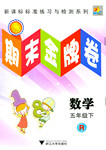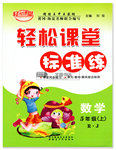题目内容
Two friends have an argument that breaks up their friendship forever, even though neither one can remember how the whole thing got started. Such sad events happen over and over in high schools across the country. In fact, according to an official report on youth violence, “In our country today, the greatest threat to the lives of children and adolescents is not disease or starvation or abandonment, but the terrible reality of violence”. Given that this is the case, why aren’t students taught to manage conflict the way they are taught to solve math problems, drive cars, or stay physically fit?
First of all, students need to realize that conflict is unavoidable. A report on violence among middle school and high school students indicates that most violent incidents between students begin with a relatively minor insult. For example, a fight could start over the fact that one student eats a peanut butter sandwich each lunchtime. Laughter over the sandwich can lead to insults, which in turn can lead to violence. The problem isn’t in the sandwich, but in the way students deal with the conflict.
Once students recognize that conflict is unavoidable, they can practice the golden rule of conflict resolution: stay calm. Once the student feels calmer, he or she should choose words that will calm the other person down as well. Rude words, name-calling, and accusation only add fuel to the emotional fire. On the other hand, soft words spoken at a normal sound level can put out the fire before it explodes out of control.
After both sides have calmed down, they can use another key strategy for conflict resolution: listening. Listening allows the two sides to understand each other. One person should describe his or her side, and the other person should listen without interrupting. Afterward, the listener can ask non-threatening questions to clarify the speaker’s position. Then the two people should change roles.
Finally, students need to consider what they are hearing. This doesn’t mean trying to figure out what’s wrong with the other person. It means understanding what the real issue is and what both sides are trying to accomplish. For example, a shouting match over a peanut butter sandwich might happen because one person thinks the other person is unwilling to try new things. Students need to ask themselves questions such as these: How did this start? What do I really want? What am I afraid of? As the issue becomes clearer, the conflict often simply becomes smaller. Even if it doesn’t, careful thought helps both sides figure out a mutual solution.
There will always be conflict in schools, but that doesn’t mean there needs to be violence. After students in Atlanta started a conflict resolution program, according to Educators for Social Responsibility, “64% of the teachers reported less physical violence in the classroom; 75% of the teachers reported an increase in student cooperation; and 92% of the students felt better about themselves”. Learning to resolve conflicts can help students deal with friends, teachers, parents, bosses, and coworkers. In that way, conflict resolution is a basic life skill that should be taught in schools across the country.
71. This article is mainly about .
A. the lives of school children B. the cause of arguments in schools
C. how to deal with school conflicts D. how to analyze youth violence
72. From Paragraph 2 we can learn that .
A. violence is more likely to occur at lunchtime
B. the eating habit of a student is often the cause of a fight
C. students tend to lose their temper easily
D. a small conflict can lead to violence
73. Why do students need to ask themselves the questions stated in Paragraph 5?
A. To make clear what the real issue is. B. To get ready to try new things.
C. To find out who is to blame.
D. To figure out how to stop the shouting match.
74. After the conflict resolution program was started in Atlanta, it was found that .
A. more teachers felt better about themselves in schools
B. there was a decrease in classroom violence
C. there was less student cooperation in the classroom
D. the teacher-student relationship greatly improved
75. The writer’s purpose for writing this article is to .
A. complain about problems in school education
B. teach students different strategies for school life
C. advocate teaching conflict management in schools
D. inform teachers of the latest studies on school violence
cdabc

 海淀课时新作业金榜卷系列答案
海淀课时新作业金榜卷系列答案 期末金牌卷系列答案
期末金牌卷系列答案 轻松课堂标准练系列答案
轻松课堂标准练系列答案




| Elixir Written by Eric Walter Twelve-year-old Roth become a friend of Dr. Banting and his Assistant,Mr.Best. who are in search of a cure for diabetes(糖尿病).She finds herself torn between her sympathy for the animals. Being experimented on and her friendship with Banting and Best. |
| George Washington Carver Written by Elizabeth Macleod Meet the “Peanut specialist”, George Washington Carver, The inventor and professor who made over and above25 products out of peanuts. Thro  ugh his agricultural research, he also greatly improved the lives of countless black farmers in the southern United States. See also MacLeod’s Albert Einstein: A life of Genius. ugh his agricultural research, he also greatly improved the lives of countless black farmers in the southern United States. See also MacLeod’s Albert Einstein: A life of Genius. |
| The Inuit Thought of it :Amazing Arctic Innovation Written by Alootook Ipellie and David MacD1. Explore more than one can help0 ideas necessary to Inuit survival. From ideas familiar to us today to inventive concept that shaped their lives, celebrate the creativity of a remarkably intelligent people. Also see other books: the Chinese thought of it by Tingxing Ye and A Native American Thought of it by Rocky Landon and David MacDonald. |
| Made in Canada:101 Amazing Achievements Written by Bew Spencer What things do we use daily that have a Canadian connection? Here Are 101c  ommon things that were invented in Canada or by a Canadian, ommon things that were invented in Canada or by a Canadian,Including the Blackberry ,alkaline (碱)batteries the Blue Box recycling program. |
| Newton and the Time Machine Written by Michael McGowan Ten-year-old boy Newton has invented a time machine to see Dinosaur up close. But it disappear on a test run with his two huge friends, Ki  ng Herbert and Queen Certrude.in it !Can he save them ng Herbert and Queen Certrude.in it !Can he save themBefore time runs out? |
【小题1】Which of the following best describes Roth’s feeling in Book 1?
| A.Painful | B.Curious |
| C.Frightened | D.Disappointed. |
| A.Animals are mentioned in Book 1 and Book 5. |
| B.Book 3 introduces 40 inventive concepts. |
| C.Alkalines batteries were invented by Dr. Banting. |
| D.George Washington Carver was a black farmer in the US. |
| A.Newton’s human friends | B.the names of the time machine |
| C.two dinosaurs | D.the inventors of the time machine |
| A.Elizabeth Macleod | B.Eric Walters |
| C.Rocky Landon & David MacDonald | D. Bev Spencer |
---I have tried very hard to find a way out of the trouble, but failed.
---why not ask Frank for help? You see______________.
| A.No pains, no gains |
| B.It’s better to think twice before doing something |
| C.Two heads are better than one |
| D.A friend in need is a friend indeed |